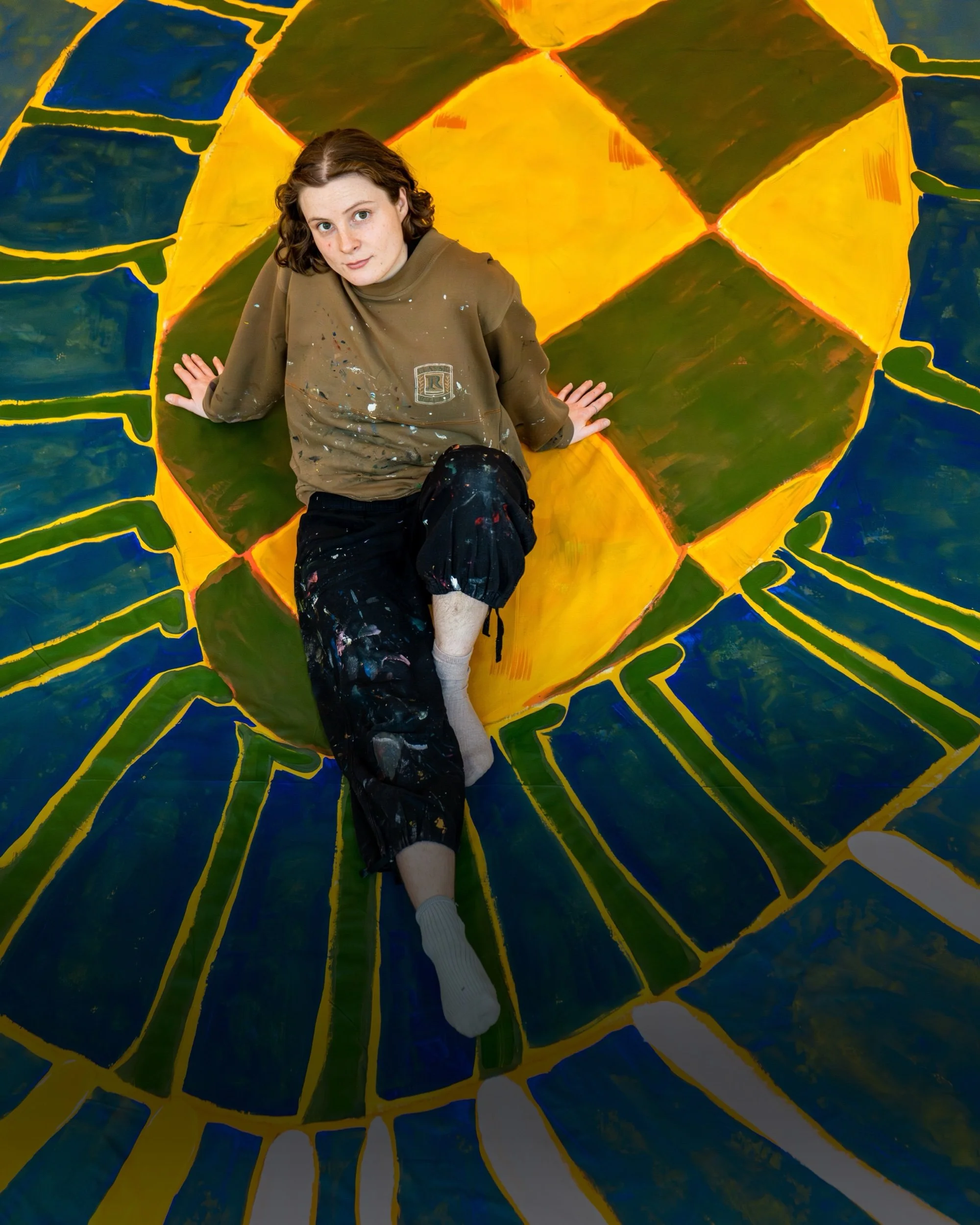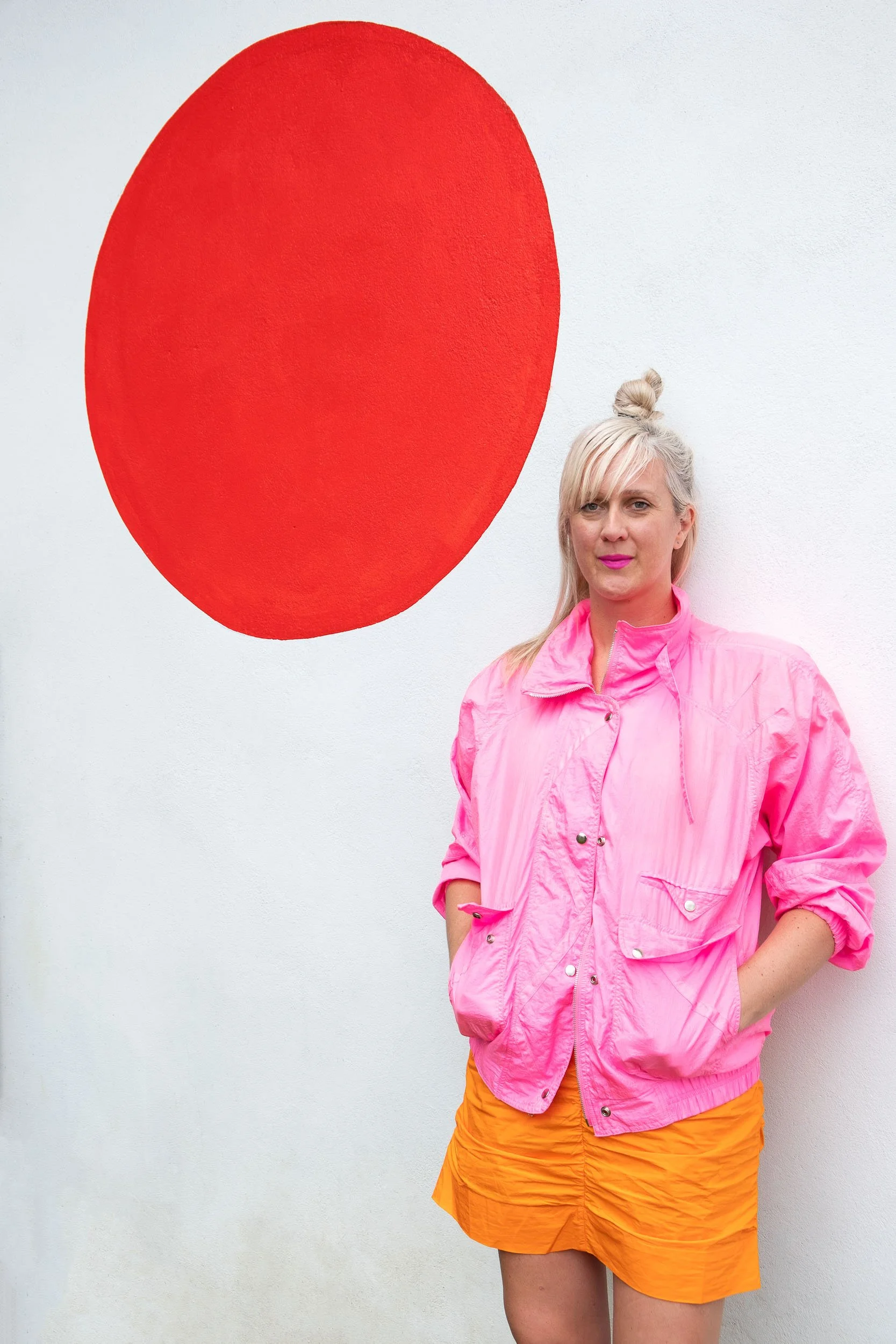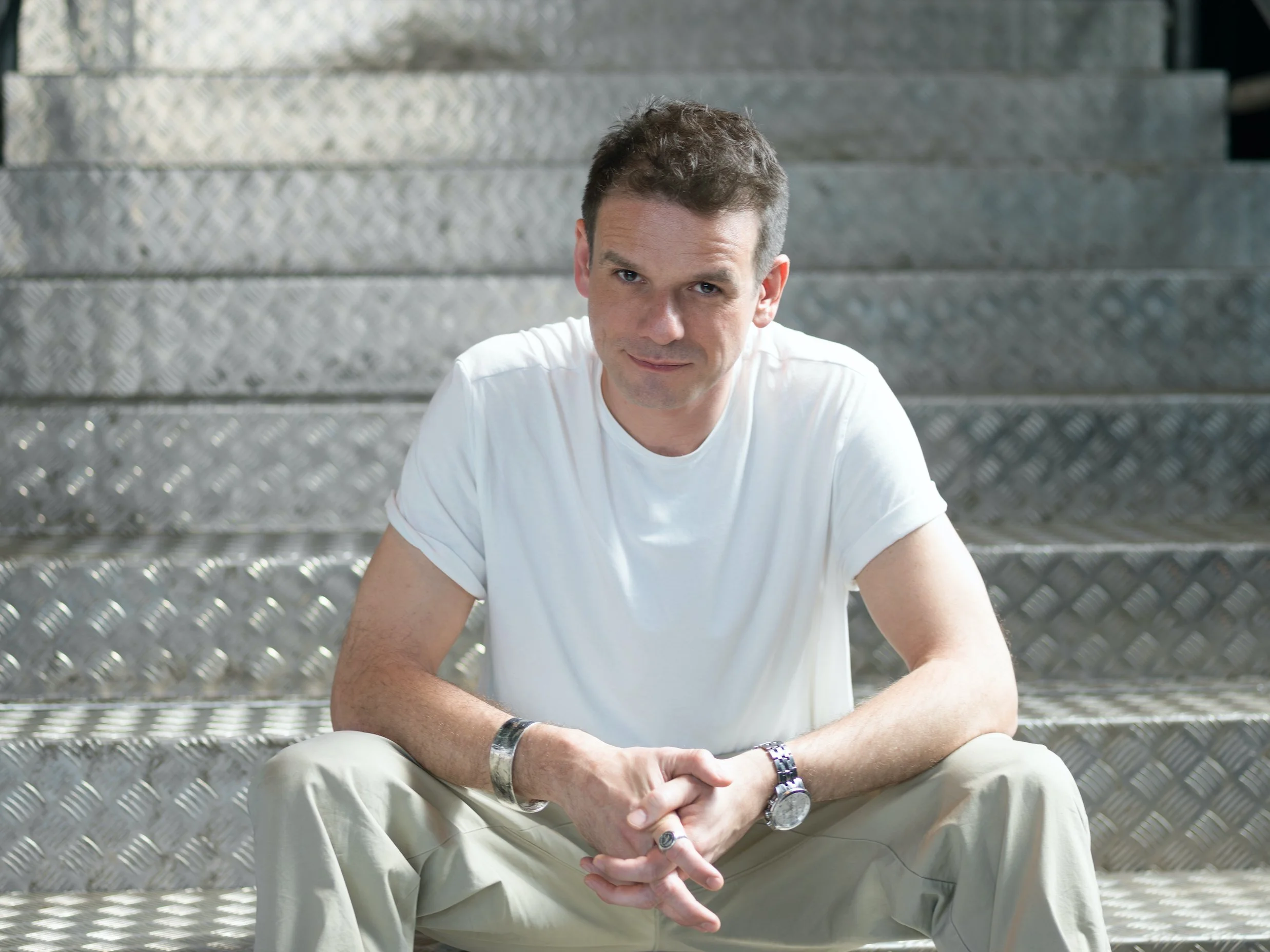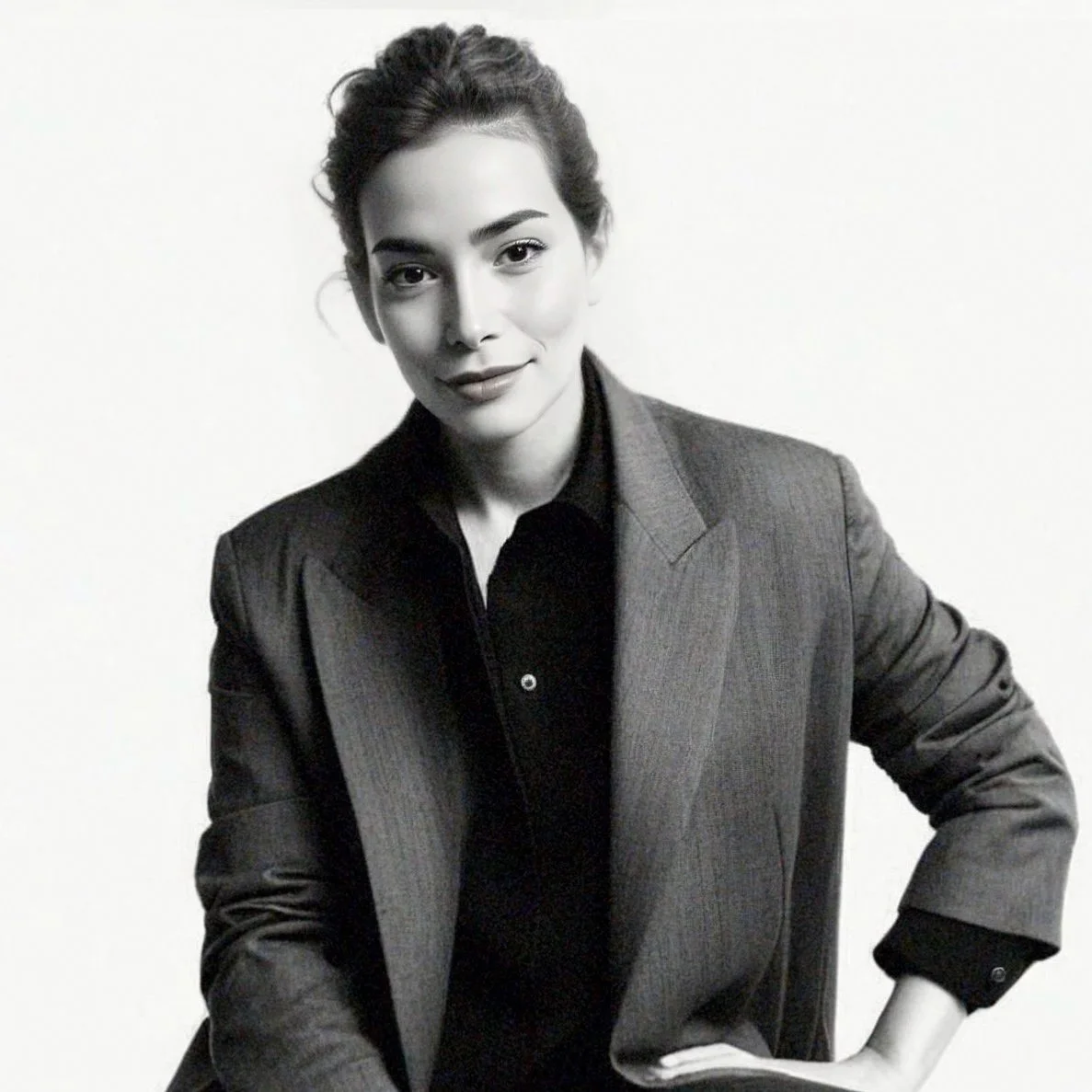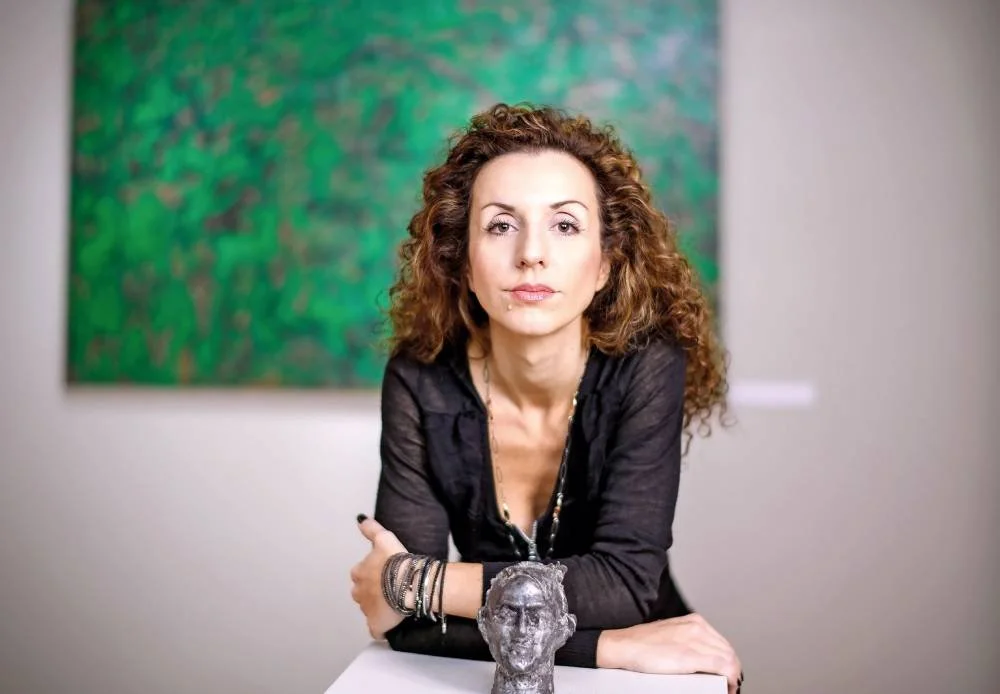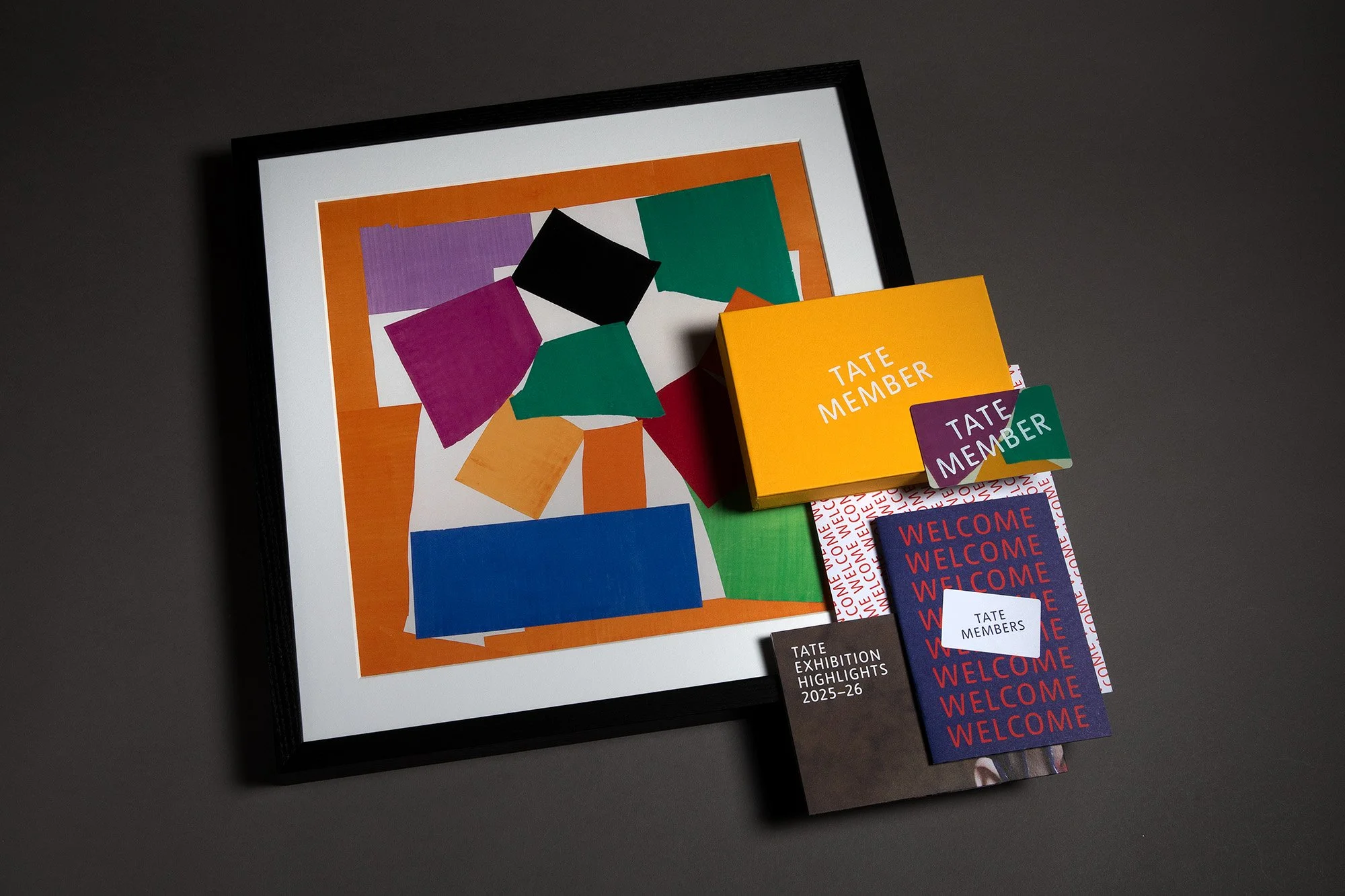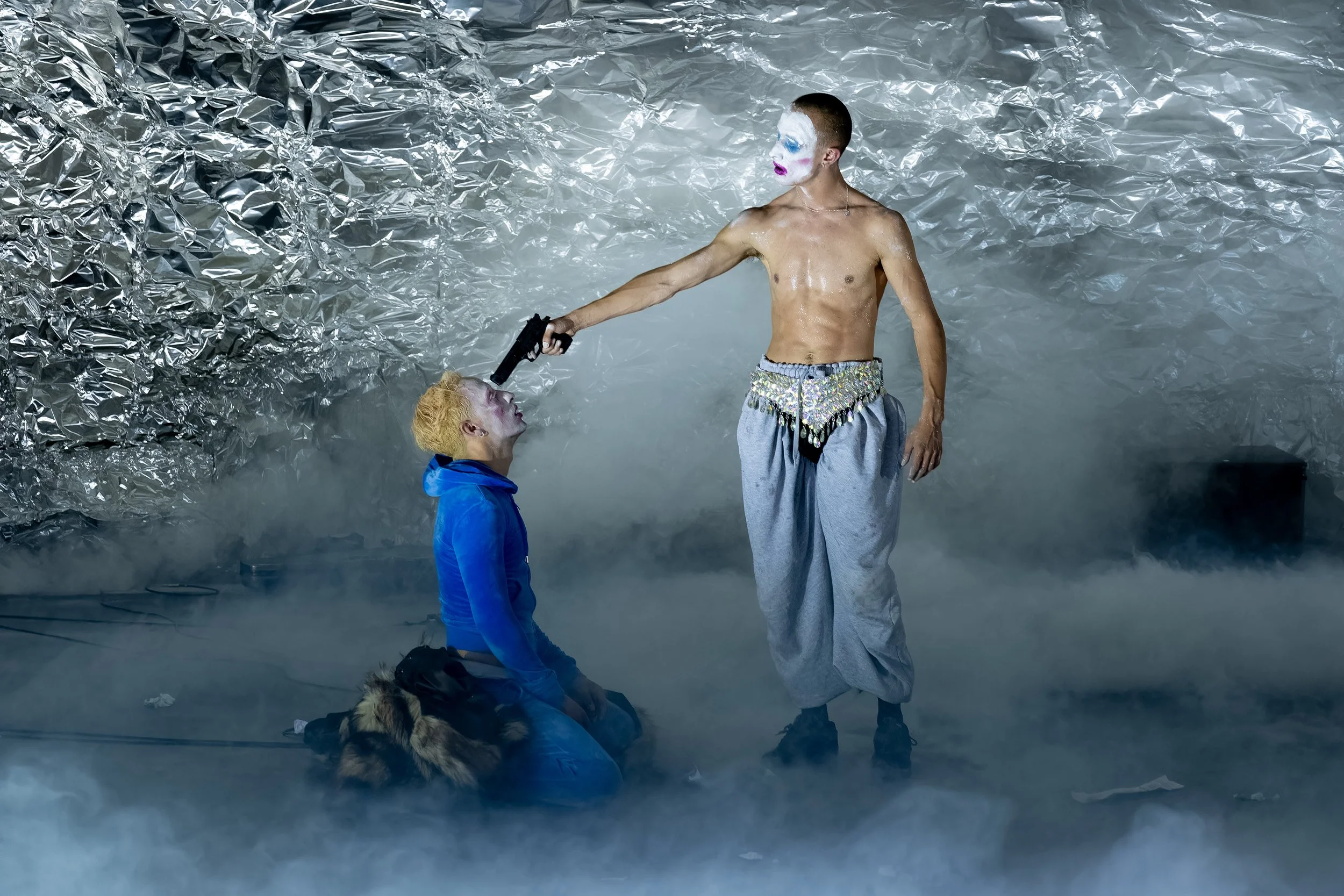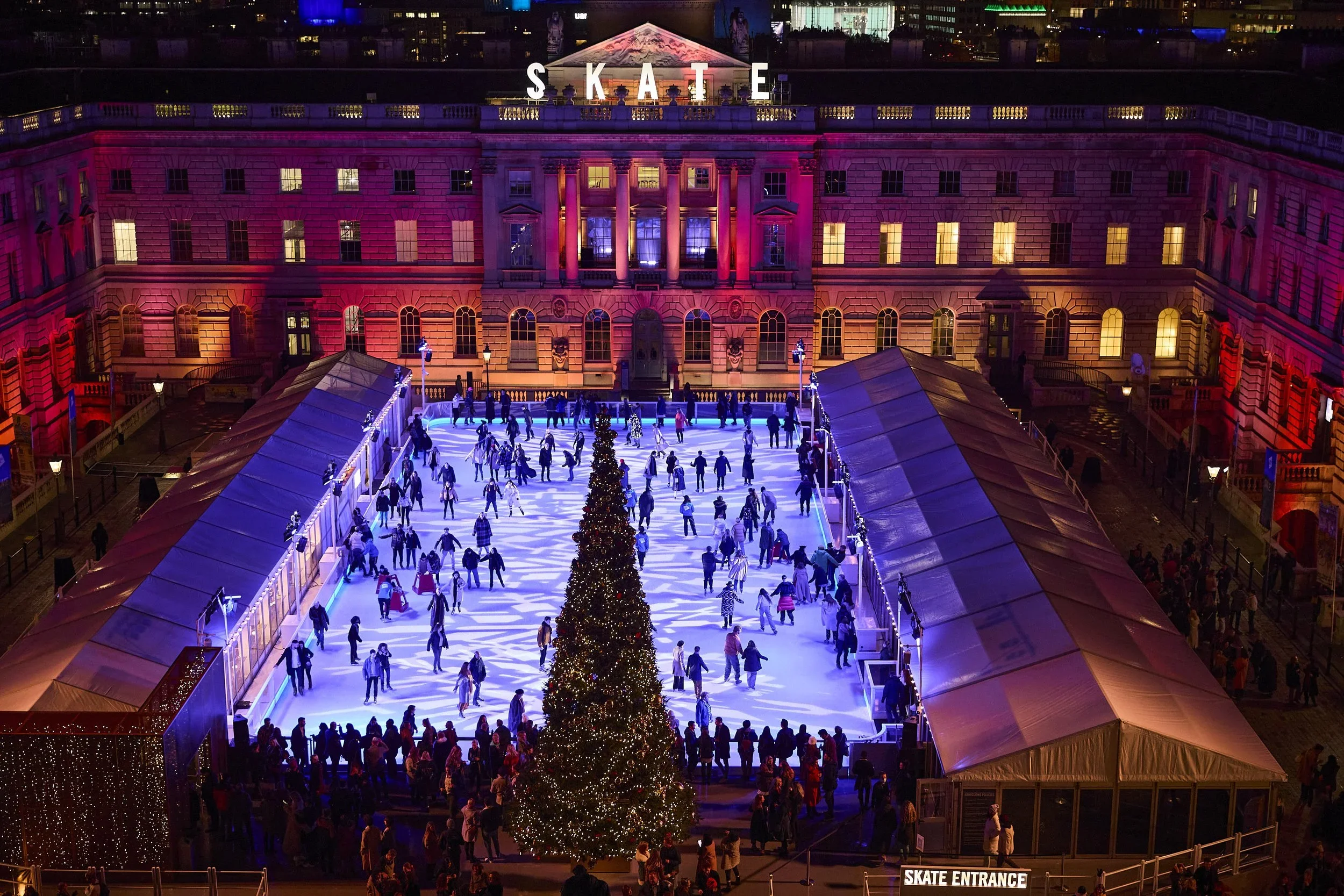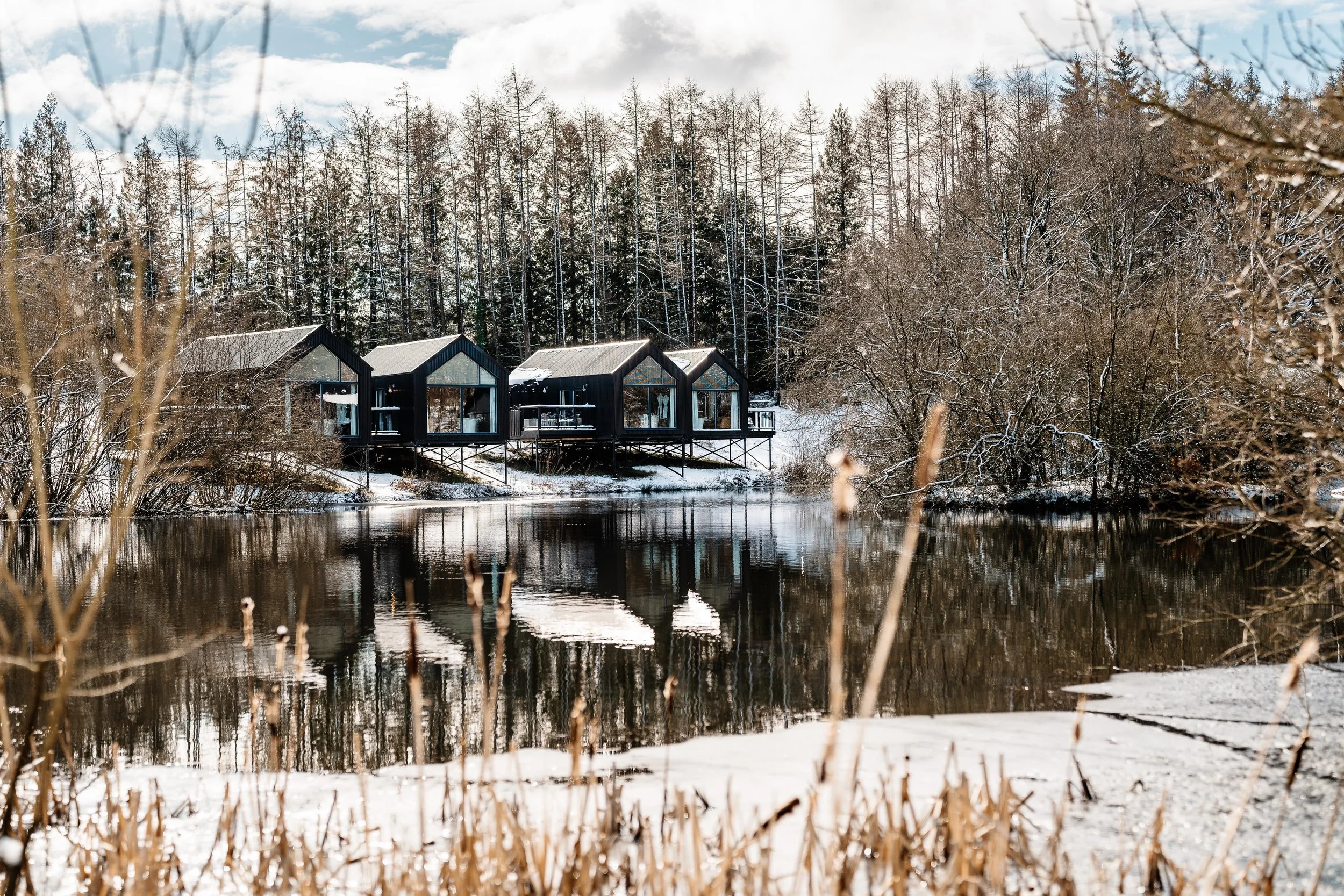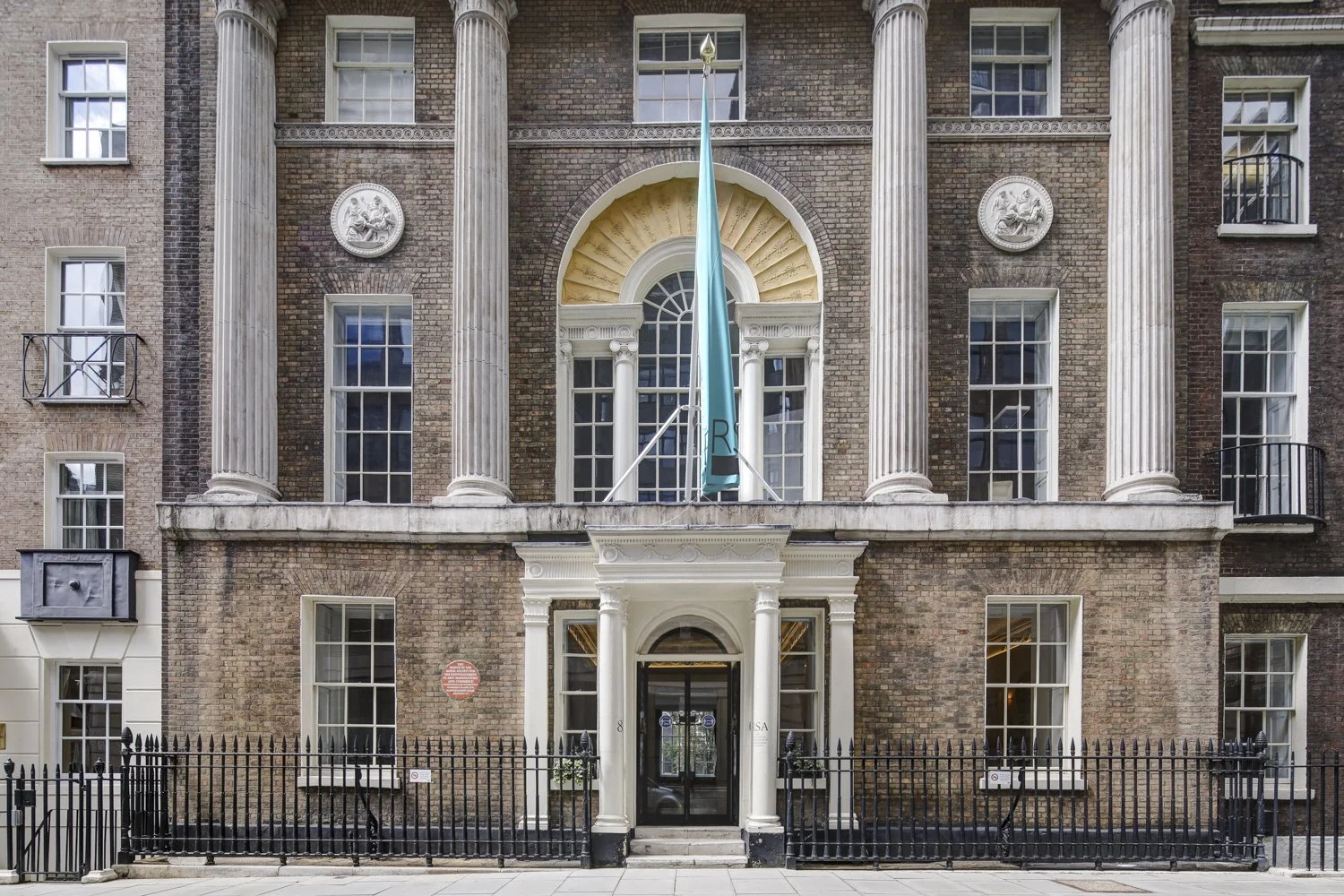In conversation with Sol Bailey Barker
“My work isn’t prescriptive, it's invitational. I think of it as a kind of mycelial thinking: slow, networked, rhizomatic.”
- Sol Bailey Barker

Sol Bailey Barker.
Sol Bailey Barker is a multidisciplinary artist whose practice navigates the intersections of ecology, mythology, and speculative futures. Working across sculpture, sound, and immersive installation, Bailey Barker engages with materials, ancient knowledge systems, and emerging technologies to interrogate the evolving relationship between humans and the natural world.
Drawing on the symbolic and material histories embedded in landscape, their work bridges past and future to propose new modes of ecological consciousness. Through a process that is both research-driven and intuitively grounded, Bailey Barker creates charged environments that invite reflection, transformation, and a reorientation toward a more-than-human, animist perspective, one that sees the world as pansentient.
We spoke with Sol about their latest exhibition, Pansentient Arboriculture, showing at Proposition Bethnal Green. The show explores a care system where trees and forests are seen as sentient beings with consciousness. It examines our cultural and spiritual connections to trees, alongside ecological practices like agroforestry and preservation. Drawing inspiration from Albion folklore and crafted from Sussex wood, the exhibition connects us to the ancient wisdom of our ancestors.
What first inspired you to focus on trees and the natural world in your work?
It began with a sense of listening. Not just to trees as living beings, but to the spaces around them, the silences, the absences, the way light changes in their company. I think I was always searching for language beyond the human, and the natural world offers both metaphor and reality. Trees are timekeepers, memory-holders, and kin. They invite slowness, which in a world growing ever faster feels like a form of protest.
Your exhibition Pansentient Arboriculture proposes that trees and forests have a form of consciousness. How did this idea develop, and what does it mean to you?
The idea emerged through a cross-pollination of science, folklore, and intuition. Research into mycorrhizal networks, Indigenous cosmologies, and ancient mythologies all pointed to a reality that Western frameworks have long denied that trees know, in a way that is non-verbal, communal, and deeply attuned. To me, pansentience is less a hypothesis and more a worldview, one where everything is in relationship, and nothing is inert.

Installation view Pansentient Arboriculture, Sol Bailey Barker, Proposition. Image credit Manu Valcarce.
The exhibition draws on the folklore of Albion and Druidic knowledge. How do these histories inform your sculptures and installations?
These lineages offer maps emotional, ecological, and spiritual. I’m interested in how pre-industrial cultures perceived the land as animate, storied, and sacred. Druidic knowledge, for example, didn’t separate the spiritual from the ecological. My work often draws on these echoes, not to recreate the past, but to compost it into something alive and urgent for the future.
Your work brings together materials like Sussex wood, abstract forms, and sound. How do these elements work together to shape the viewer’s experience?
I think of materials as collaborators. Sussex wood holds its own history, the winds it’s weathered, the soil it’s grown in and the seasons it's witnessed. The abstract forms invite a kind of interpretive wandering, while the sound pulls the viewer inward, into a more embodied, less ocular way of knowing. Together, they create a sensory ecology that asks the viewer to slow down and reattune.

Installation view Pansentient Arboriculture, Sol Bailey Barker, Proposition. Image credit Manu Valcarce.
In the woven hazel and willow installation, visitors are invited to lie down and engage with sound. What do you hope this reveals about our relationship with nature?
To lie down is to surrender a little. It shifts the power dynamic and we become vulnerable, receptive. I want people to feel the land holding them, to remember that we are not apart from nature but continuous with it. Sound helps dissolve boundaries; it's ephemeral, atmospheric, and strangely intimate. The wonderful Zoe Bedeux reads my science fiction story that imagines a future ecologically integrated green london. The oral tradition is how we received knowledge for most of our shared history, so I think it speaks to something ancient and inherent in our ancestry . My hope is that people leave the piece with a sense of interconnection.
You speak about ‘Ancient Futurism’ and a future rooted in respect for nature. How do you see your work contributing to ecological thinking today?
‘Ancient Futurism’ is a term I use to imagine futures where ancient ecological knowledge is not just remembered but reactivated. My work isn’t prescriptive, it's invitational. I think of it as a kind of mycelial thinking: slow, networked, rhizomatic. In a time of climate emergency, I want to offer spaces for reimagining, for deep time dreaming, for remembering symbiosis.
How do you envision your practice growing in the coming years, and what ideas or themes do you want to continue exploring?
I want to keep collaborating with forests and with other ecosystems, with scientists and storytellers. I'm drawn to ideas of restoration, guided rewilding where our role is that of caretakers (both ecological and emotional), and more experiments with sound and ritual. I’m also curious about how this work might move outside the gallery and into the land itself, I think we need art that breathes with the seasons.

Installation view Pansentient Arboriculture, Sol Bailey Barker, Proposition. Image credit Manu Valcarce.
The [Quick] #FLODown:
Best life advice?
Grow roots, not walls.
Last song you listened to?
Nazo Nazo by Kikagaku Moyo.
Last book you read?
Braiding Sweetgrass by Robin Wall Kimmerer (again).
Can’t live without…?
Making sculptures.
What should the art world be more of and less of?
More reciprocity, less extraction.
Pansentient Arboriculture runs from 25 April to 7 June 2025 at Proposition Bethnal Green, 279 Cambridge Heath Rd, London E2 0EL.
Website: solbaileybarker.com
Instagram: @solbaileybarker
Charlotte Winifred Guérard is a London-based artist and recent graduate of the Royal Academy of Arts School, where she was recognised as a Paul Smith’s Foundation scholar for her artistic achievement. Her work has been exhibited at the Royal Academy, Coleman Project Space, Fitzrovia Gallery, Messums and Palmer Gallery, and she has completed prestigious residencies including…
BBC Radio 1 presenter, DJ, podcaster, and award-winning entrepreneur Jaguar joined us for our In conversation with series to discuss her journey from sneaking out to raves on the tiny island of Alderney to becoming a tastemaker in the UK dance scene, her debut EP flowers…
Annie Frost Nicholson is an artist whose work sits at the electric intersection of personal memory, public ritual and emotional release. Known for transforming private grief into bold, colour-saturated experiences - from stitched paintings to micro-discos - Annie’s practice creates space for collective healing without losing the rawness of its origins…
We spoke to visionary director Łukasz Twarkowski ahead of the UK premiere of ROHTKO, a groundbreaking production that takes inspiration from the infamous Rothko forgery scandal to ask urgent questions about originality, truth and value in art today. Combining theatre, cinema, sound and digital technology, the work challenges…
Iranian-born British curator and producer Tima Jam is the Founder of Art Voyage, a new migrant-led cultural platform committed to building a dynamic, equitable, and globally connected arts ecosystem through novel initiatives comprising exhibitions, public art, summits, residences, and community engagement to create a lasting cultural and social impact…
Betty Ogundipe (b. 2001) is a multidisciplinary artist of Nigerian heritage whose work explores resilience, femininity, and the power of love and resistance. Her debut solo exhibition, LOVE/FIGHT at Tache Gallery…
Absolut Vodka celebrated the launch of its Keith Haring Artist-Edition bottle with a public art takeover, transforming London’s Charing Cross station into “Haring Cross” on 17–18 September. We spoke with Deb Dasgupta, Absolut’s Vice President of Global Marketing…
Maya Gurung-Russell Campbell is an artist working across sculpture, image, and text, exploring personal and collective memory. She is currently studying at the Royal Academy Schools (graduating 2026) and holds a BA in Photography from the London College of Communication…
YARA + DAVINA make social practice artwork, creating ambitious public artworks that respond to site, context and audience. Unfailingly inventive, they use formats from within popular culture to make works which are accessible and playful…
Benni Allan is the Founding Director of EBBA Architects, a London-based studio recognised for its ambitious, cross-disciplinary approach that bridges architecture, culture, fashion and design. Benni founded EBBA to unite his passion for architecture, making and collaborative practice. In this interview, Benni discusses EBBA’s ethos and Pulse, a new installation commissioned for Houghton Festival at Houghton Hall…
Oskar Zięta is an architect, process designer and artist whose work challenges the boundaries between disciplines. His practice brings together design, engineering, art and bionics to create sculptural forms. His latest installation, ‘Whispers’, is currently on display outside One New Ludgate as part of the London Festival of Architecture 2025…
Danny Larsen is a Norwegian artist who has transitioned from a successful career in professional snowboarding to establishing himself as a distinctive painter. His detailed neo-pointillist landscapes reflect a deep connection to nature and a personal journey of transformation. Ahead of his debut London solo exhibition…
Nimrod Vardi and Claudel Goy, directors of arebyte Gallery, discuss how the space is redefining digital art by blending technology, social science, and immersive experiences. From AI and consciousness to the societal impact of tech, arebyte’s bold exhibitions go beyond visual spectacle, focusing on meaningful engagement and innovative presentation…
Varvara Roza is a London-based private art advisor and artist representative. She specialises in promoting contemporary art by both established and emerging international artists. In our conversation, we discussed her unique approach to the art market…
David Ottone is a Founding Member of Award-winning Spanish theatre company Yllana and has been the Artistic Director of the company since 1991. David has created and directed many theatrical productions which have been seen by more than two million spectators across 44 countries…
Akinola Davies Jr. is a BAFTA-nominated British-Nigerian filmmaker, artist, and storyteller whose work explores identity, community, and cultural heritage. Straddling both West Africa and the UK, his films examine the impact of colonial history while championing indigenous narratives. As part of the global diaspora, he seeks to highlight the often overlooked stories of Black life across these two worlds.
Gigi Surel is the founder of Teaspoon Projects, a groundbreaking cultural initiative launching in London with its first exhibition and programme. Dedicated to exploring contemporary storytelling, Teaspoon Projects blends visual arts and literature while encouraging audience participation through carefully curated events.
Dian Joy is a British-Nigerian interdisciplinary artist whose work delves into the intersections of identity, digital culture, and the fluid boundaries between truth and fiction. Her practice is rooted in examining how narratives evolve and shape perceptions, particularly in the digital age.
Youngju Joung is a South Korean artist known for her paintings of shanty village landscapes, illuminated by warm light. Inspired by memories of her childhood in Seoul, she uses crumpled hanji paper to create textured, lived-in spaces that reflect both poverty and affluence.
John-Paul Pryor is a prominent figure in London’s creative scene, known for his work as an arts writer, creative director, editor, and songwriter for the acclaimed art-rock band The Sirens of Titan…
Poet and novelist Hannah Regel’s debut novel, The Last Sane Woman, is a compelling exploration of the emotional lives of two aspiring artists living at different times, yet connected by the discovery of a box of letters in a forgotten feminist archiv…
Daria Blum, a 2023 RA Schools graduate, won the inaugural £30,000 Claridge’s Royal Academy Schools Art Prize in September. Her exhibition, Drip Drip Point Warp Spin Buckle Rot, at Claridge’s ArtSpace...
We recently interviewed Eden Maseyk, co-founder of Helm, Brighton’s largest contemporary art gallery, which has quickly established itself as a thriving cultural hub…
Lina Fitzjames is a Junior Numismatist at Baldwin’s Auction House, located at 399 Strand. She is part of a new generation reshaping the image of numismatics, the study of coinage….
Sam Borkson and Arturo Sandoval III, the acclaimed LA-based artists behind the renowned collective "FriendsWithYou," are the creative minds behind "Little Cloud World," now on display in Covent Garden. During their recent visit to London, we had the privilege of speaking with them about their creative process and the inspiration behind this captivating project.
Paul Robinson, also known as LUAP, is a London-based multimedia artist renowned for his signature character, The Pink Bear. This character has been featured in his paintings, photography, and sculptures, and has travelled globally, experiencing both stunning vistas and extreme conditions…
Koyo Kouoh is the Chief Curator and Executive Director of Zeitz MOCAA…
Matilda Liu is an independent curator and collector based in London, with a collection focusing on Chinese contemporary art in conversation with international emerging artists. Having curated exhibitions for various contemporary art galleries and organisations, she is now launching her own curatorial initiative, Meeting Point Projects.
Lily Lewis is an autodidact and multidisciplinary artist working in the realms of the narrative, be that in the form of a painting, a poem, large scale sculptures, tapestry, or performance…
Paul Vanstone is a sculptor recognised for his expertise in marble carving and depiction of human figures and fabric using light and stone interplay. He studied at Central St. Martins School of Art and completed an MFA at the Royal College of Art…

From the joys of Christmas at Kew to the lively Smithfield meat auction, and from major concerts and ballets to intimate workshops and family-friendly trails, the city offers an extraordinary mix of experiences. This guide brings together the very best of Christmas in London…
This guide highlights some of the must-see art exhibitions to visit over the festive period in London, including the days between Christmas and New Year’s. From major retrospectives of international masters such as Kerry James Marshall, Wayne Thiebaud, and Anna Ancher, to engaging contemporary works by Danielle Brathwaite-Shirley, Jennie Baptiste, and Tanoa Sasraku…
London’s cultural scene, a gallery or museum membership is the perfect alternative to another pair of socks. From unlimited access to exhibitions and exclusive events to discounts in shops and cafés, these memberships offer experiences that can be enjoyed throughout the year, while also supporting the vital work of arts organisations…
Your guide to London’s can’t-miss events this week, 17–23 November 2025, from Cabaret Voltaire live at ICA to Ballet Shoes at the National Theatre and The Evolution of UK Jazz at the Barbican…
Charlotte Winifred Guérard is a London-based artist and recent graduate of the Royal Academy of Arts School, where she was recognised as a Paul Smith’s Foundation scholar for her artistic achievement. Her work has been exhibited at the Royal Academy, Coleman Project Space, Fitzrovia Gallery, Messums and Palmer Gallery, and she has completed prestigious residencies including…
This week in London, you can enjoy festive ice skating, Christmas lights, jazz and classical concerts, and a range of art exhibitions. Highlights include Skate at Somerset House, Christmas at Kew, the EFG Jazz Festival, and the Taylor Wessing Photo Portrait Prize 2025…
From the 6th to the 9th of November, the leading West African art fair Art X Lagos celebrates its 10th birthday at the Federal Palace on Victoria Island. Founded by Tokini Peterside-Schwebig in 2016, the fair has become an unmissable event in the global art calendar, attracting galleries from over 70 countries and participants from 170 countries since its launch…
If you’re after something bold, queer and completely uncategorisable this November, you need to know about KUNSTY, the Southbank Centre’s brand new four day performance series running from 5-8 November 2025…
London’s most beloved Christmas activity is back. As festive cheer returns to the city, with twinkling lights and the scent of mulled wine drifting through the air, for many Londoners and visitors from further afield, nothing quite captures the spirit of the city at Christmas like strapping on a pair of skates and stepping onto the ice…
As the crisp autumn air settles over London, the iconic gardens of Berkeley Square are once again hosting one of the most anticipated gatherings in the art and antiques world: the LAPADA Fair 2025, running from 28 October to 2 November…
November is a lively time to be in London, with the festive season in full swing and the city buzzing with events. From skating at Somerset House to Christmas lights switch-ons and festive markets like the Southbank Centre Winter Market, there are plenty of ways to embrace the holiday spirit. Beyond the seasonal festivities, London’s cultural calendar is brimming with art, music, and performance…
As far as weekend getaways go, this 70-acre estate offers a peaceful country escape with all the best elements of a traditional hotel experience. Staffordshire, arguably, is not yet on the map for luxury and leisure but set in the heart of the beautiful Staffordshire Moorlands, The Tawny surely is a beacon of things to come…
Art Basel Paris returns to the Grand Palais for its second edition from 24–26 October 2025, bringing together 206 leading galleries from 41 countries and territories. Below is our guide to seven artists not to miss at this year’s edition, each presenting distinctive work through their galleries…
Art Basel Paris 2025’s Public Programme turns the city into a stage for contemporary art, placing bold, large-scale works in streets, courtyards, and cultural landmarks - all free to visit. From a dreamy opera of 30 surreal figures at Palais d’Iéna to a colossal Kermit the Frog balloon looming over Place Vendôme, here is our guide to five standout works from the Art Basel Public Programme that you simply cannot miss…
Frieze London 2025 returns to Regent’s Park with a dynamic mix of emerging and established galleries, reaffirming the city’s creative pulse. Highlights include Esther Schipper’s dreamlike works by Sarah Buckner, Gagosian’s vibrant installation by Lauren Halsey, and Pace’s meditative paintings by William Monk. From Do Ho Suh’s ethereal fabric architectures at Lehmann Maupin…
Paris launches into its own spectacular celebration of art each October, transforming the city into a hub for collectors, curators, and cultural enthusiasts. From the grandeur of Art Basel Paris at the newly renovated Grand Palais to the focused energy of Paris Internationale, OFFSCREEN, AKAA and Menart, each fair contributes something unique to the city’s vibrant art scene.
British Ceramics Biennial is back and better than ever. Running until 19 October 2025, the dynamic programme of free exhibitions, screenings, talks and events is proving a hit with both locals and critics…and just an hour and a half’s train away from London, it’s well worth a day trip…
Echoes of Migration is the flagship summit to launch new not-for-profit platform Art Voyage this autumn. Echoes of Migration officially inaugurates Art Voyage’s innovative, itinerant cultural programme…and gears us up for what is in store for the Art Voyage Biennial….
Betty Ogundipe (b. 2001) is a multidisciplinary artist of Nigerian heritage whose work explores resilience, femininity, and the power of love and resistance. Her debut solo exhibition, LOVE/FIGHT at Tache Gallery…
The V&A’s Marie Antoinette Style, sponsored by Manolo Blahnik, is being hailed as the first landmark exhibition in the UK devoted to France’s most infamous Queen of Fashion. It is a glittering journey through silk, flamboyance and legacy….
Malta is fast becoming one of the Mediterranean’s hottest destinations, offering sun-soaked beaches into October, a thriving arts and culture scene, and stunning architecture and landscapes…
This October in London offers everything from Frieze and the BFI Film Festival to Peggy Gou, the London Literature Festival, and Halloween at Kew.
From The Phoenicia Hotel and Iniala Harbour House, Valletta showcases some of Malta’s finest hotels, ranging from landmark luxury where royalty once danced to boutique hideaways filled with Maltese art…
Discover the best restaurants in Malta, where to eat, drink and enjoy authentic Maltese food and Michelin-star dining…
October is the month for art in London, thanks to Frieze and several other art fairs taking place across the city. There will be a significant programme of shows across the capital’s galleries and institutions. Notable openings include Cosima von Bonin’s Upstairs Downstairs at Raven Row, examining 35 years of work through objects, characters, and early pieces unseen for more than a decade; Wolfgang Tillmans’ Build From Here at Maureen Paley, and Arthur Jafa’s first exhibition at Sadie Coles HQ…
This week in London, explore modern and contemporary art at the British Art Fair, experience couture drama with LACRIMA at the Barbican, celebrate heritage at the Chelsea History Festival, enjoy a decade of dance with Acosta Danza at Sadler’s Wells, and step into Shakespeare’s world with Hamlet at the National Theatre…
With just 100 days to go until Christmas, London’s West End is preparing for the festive season. Carnaby Street and Covent Garden have confirmed their 2025 Christmas lights switch-on dates, signalling the start of celebrations across the capital…

